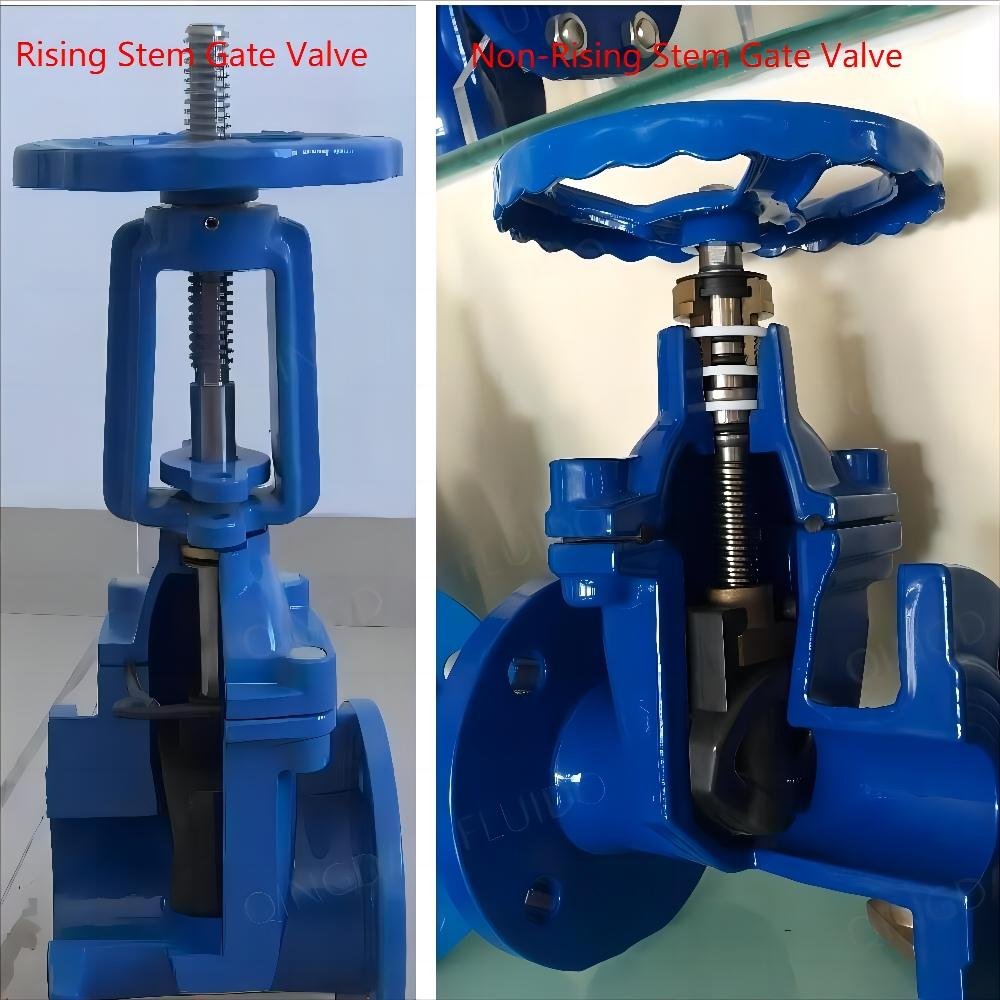According to the structure of the valve stem, cast iron gate valve can be divided into two types: Rising stem gate valve and Non rising stem gate valve.
1.Rising stem cast iron gate valve: The stem nut is on the valve bonnet or on the yoke. Rotate the stem nut to lift and lower the stem when opening and closing the disc. This structure is beneficial to the lubrication of the stem, the degree of opening and closing is obvious, so this type is widely used.
2. Non rising cast iron gate valve: the stem nut is in the valve body, in direct contact with the fluid medium. Rotating valve stem to realize the opening and closing of the disc. The advantage of this structure is that the height of the gate valve will always remain the same, so the installation space can be small, is suitable for the large size gate valves or for where installation space is limited. This structure is equipped with an indicator to indicate the opening and closing degree. The disadvantage of this structure is that the valve stem threads cannot be lubricated and due to the directly contact with media ,easy to get erosion and damage.
Main differences between Rising stem and Non rising stem cast iron gate valve:
1. The stem of the rising stem flange gate valve is exposed, the nut close to the hand wheel and is fixed (without rotation and can not axial movement), through the rotation of the stem to lift the disc, stem and disc only have relative rotation movement and no relative axial displacement, there is a door shape bracket. The stem of the non rising stem flange gate valve is only rotating and not moving up and down, its nut is fixed to the disc, through the rotation of the stem to lift the disc, no visible door shape bracket;
2. The stem of rising stem gate valve is visible, the stem of non rising stem gate valve is invisible;
3. When open and close the non rising stem gate valve,the hand wheel and the stem are relatively motionless. Through the rotation of the stem at the fixed point to drive the disc up and down to realize the opening and closing. The rising stem gate valve is raised or lowered by the threaded drive of the valve stem and the steering wheel. The disc is connected to the stem to move up and down together, the hand wheel is always at the fixed point;
So the question has come up, which is better between the Rising stem cast iron gate valve and Non rising stem cast iron gate valve? In fact, these are only two different structural forms of cast iron gate valves, their functional uses are the same, so you can only choose the type of gate valve according to the actual use, can not decide which one is better. But to save the cost, the Non rising stem cast iron gate valve is cheaper and more used.
